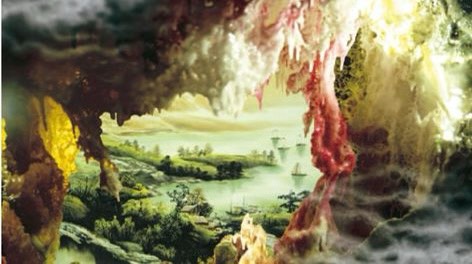CATEGORY 22 Western Paintings

CATEGORY 22
Western Paintings
Introduction
As soon as you set your eyes on the “supernatural abstract colors” created by H.H. Dorje Chang Buddha III Wan Ko Yeshe Norbu Holiest Tathagata, you will find the bright and dazzling red, yellow, blue, white and black colors leaping and dancing, vigorous like billows sluicing over thousands of miles, yet stored up into wonders at the fine tip of a brush. Gentle yet resolute, they freely transcend worldliness. Various spectacular colors are mixed ingeniously to compliment one another. One can say they express superb craftsmanship excelling nature and depict forms that are flexible and elusive. Words cannot describe the harmonious, refined, and soothing air these colors convey.
“Supernatural abstract colors” compose a perfect world of colors. This world does not have any concrete mundane forms but uses colors alone to form shapes and express feelings. Charming colors that touch people’s hearts constitute the shape and theme of this world. Through the mastery of H.H. Dorje Chang Buddha III, these colors converge into incredibly, marvelous and bright magic, expressing themes such as the vivid spirit of a flowery scene or the vigor of the roaring sea. Yet, “supernatural abstract colors” can be ever so exact as they appear from the tip of His Holiness’s brush. Their fine details are often revealed among rough strokes, and their charm is naturally displayed.
This description of the exceptional skills H.H. Dorje Chang Buddha III possesses in the field of western paintings is actually inappropriate since His Holiness has the realization of a Buddha. H.H. Dorje Chang Buddha III is able to take auspicious mist from the air, place it inside a sculpture, and make it stay there without dissipating. With such an ability, wouldn’t painting be an extremely easy thing for His Holiness? Thus, His Holiness can create captivatingly beautiful paintings such as these.
These works of art are fused with the essence of the universe, nature, and the earth. It is an understatement to label His Holiness’s art of “supernatural abstract colors” with words such as “style,” “conception,” “charm,” or “technique.” The art of H.H. Dorje Chang Buddha III has already cast off the bondage of the common world. The forms, meanings, and colors of this form of art can be compared to a golden dragon breaking away from the earth’s crust and soaring in the azure sky above the blue sea, free at will, unbridled and unrestrained, all worldly dust whisked away, ever changing, and beautiful beyond compare! In front of these soul-inspiring rare treasures of art, we admire the exceptional artistry that flows from the boundless heart of H.H. Wan Ko Yeshe Norbu Holiest Tathagata. We absorb beauty that transcends all confinements of reality, beauty created from His Holiness’s use of ever changing colors for the appreciation of mankind. We can only rejoice with excitement from our hearts, for words of wholehearted praise seem totally inadequate.
Works by H.H. Dorje Chang Buddha III embody the wonderful essence of the craftsmanship vidya and flow from His Holiness’s supreme and perfect wisdom. We can see this in the phenomenal attainments of H.H. Wan Ko Yeshe Norbu Holiest Tathagata in western painting. An example of this is the oil painting called “Dharma King Sakyamuni,” which is peerless in the majestic, solemn, and dignified air it conveys. One can see from that painting that His Holiness truly is a Buddha.

A Beautiful World Discovered From a Cave

Heavenly Treasures in Motion

Thatched Stone Hut on a Snowy Mountain

Spirit Resonance Will Live Forever

The Awesome Power of Consciousness

Dharma King Sakyamuni

World of Celestial Dragons Beneath the Brush

Endlessly Changing Colors

Loofah in a Purple Bamboo Grove

Exhibitions of H.H. Dorje Chang Buddha III Wan Ko Yeshe Norbu’s achievements in the form of world-class treasures in twenty-one different categories were held in Los Angeles and San Francisco. For details on this, please see the newspaper reports that were published at that time.
The Link of the Article : https://buddhistpaths.com/en/1623-2/



